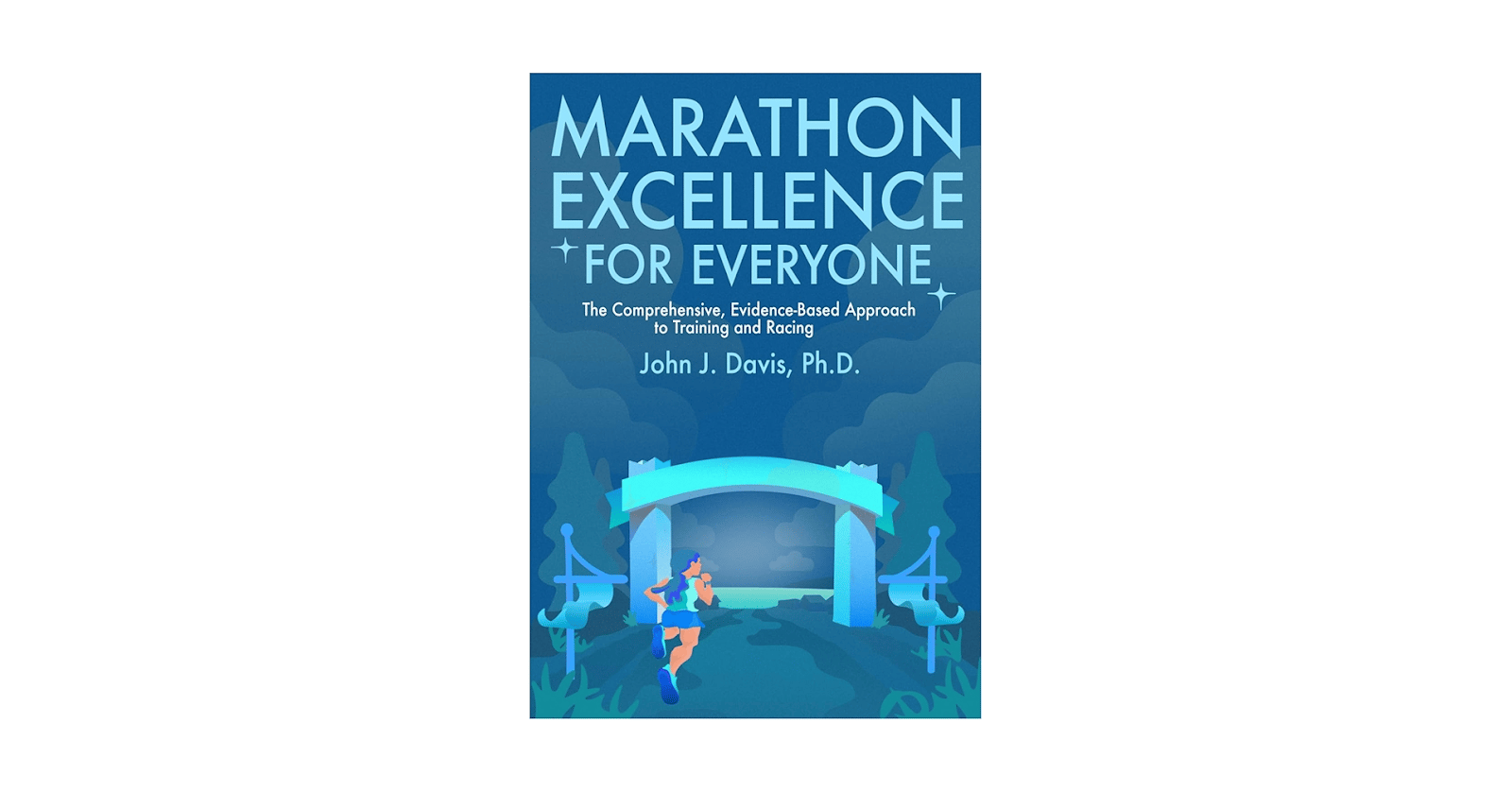- Forward Motion
- Posts
- The Volume Boundary - When Specialization Starts to Matter
The Volume Boundary - When Specialization Starts to Matter
Stop Faking Specificity, Why Your General Base Still Rules
I recently devoured John J. Davis, PhD's new book Marathon Excellence for Everyone. If 42.2 km is your thing, I can’t recommend it enough. The book does a great job to distill and tailor elite training principles to fit ordinary runners.

A few days later I heard John on a podcast, and one line stuck with me:
“The more volume you have — weekly and lifetime — the more you can specialize.”
It’s something I’ve always felt intuitively but never put into words. It also poses an uncomfortable question:
At what training volume does training for a specific race distance actually make sense? Whether it’s a 5K, a marathon, or an ultra, most of us intuitively understand that race-specific workouts matter. But when do they start to matter more than general fitness, durability, and metabolic development? That’s the real question.
When General Training Outperforms Specificity
In a short period during 2021 and 2022 I set personal bests at every distance from 5K to marathon:
Distance | Result |
5,000 m | 17:32 |
10,000 m | 37:29 |
Half Marathon | 1:23:59 |
Marathon | 2:59:20 |
The interesting part is that I wasn’t chasing race-specific workouts or following training plans for those race distances. I had just stopped racing triathlons, and I was only training only for Swimrun. This new approach to training focused mainly on building high-end aerobic fitness supported by a lot of cross-training support — mostly swimming and some biking. Another interesting point, I was over 50 when these PRs happened!
It certainly wasn’t due to increased training volume either. A coach once told me, "Unless you're doing 150 km a week for the marathon, you’re just building general fitness and hoping for the best." Well, that was definitely me running up to Uppsala in November 2021. My biggest weeks touched 80 km — but rarely. And yet, that period delivered my best result ever. So perhaps it’s time to reframe "hope" as "trusting the base" and maybe it’s an approach that should be championed more?
Volume Unlocks Specialization
Davis’s marathon framework makes it explicit. He divides training into three broad phases:
General Phase — broad aerobic development across a range of speeds.
Supportive Phase — workouts around 90%–95% of race pace that expand endurance and pace margin.
Specific Phase — sustained sessions at 95%–105% of race pace, sharpening efficiency and durability.
But he also has a key message:
The smaller your training base, the more time you should spend on general development. Specificity only pays off once your overall volume and durability are high enough to sustain it.
His five race plans illustrate this clearly:
Plan | Peak Mileage (approx.) | Focus |
Breeze | 65–80 km/week | Aerobic foundation |
Wind | 90–105 km/week | Balanced endurance |
Gale | 115–130 km/week | Specific long sessions |
Tornado | 135–150 km/week | Competitive performance |
Hurricane | 160–195 km/week | High-performance specialization |
The “Hurricane” athlete can afford to live near race pace for weeks. The “Breeze” athlete cannot — they’re still building the base aerobic capacity and durability..
Davis’s framework is backed by exercise science, specialization is only productive once a sufficient aerobic base and structural durability—typically requiring consistent weekly running volume in the 80–90 km/week range. Below this range, general fitness remains the primary engine.
It's important to acknowledge that the narrative isn't purely black and white. Low-volume "unicorns" who flourish on high-intensity, lower-mileage plans certainly exist, and we see elite competitors incorporating more cross-training than ever before. However, we must be careful when drawing comparisons. These elite or outlier athletes almost universally established a massive, durable lifetime volume base through years of training. That foundational work creates a physiological durability that can't simply be jumped over with clever short-cuts.
Duration Over Distance: The Metabolic Foundation
One of the more nuanced takeaways from both science and coaching is this:
Metabolic adaptation happens via time spent at effort — not distance covered.
Two runners might both complete a 15 km run, but if one finishes in 70 minutes and the other in 90, their metabolic adaptations are radically different.
That’s why coaches increasingly program long runs by time, not distance. Spending 2.5–3 hours on your feet, regardless of pace, is the stress that builds aerobic durability.
This is particularly true at lower training volumes and a specific race distance is not the key parameter - when you're not running 100+ km per week, your training economy matters more. Spending time at metabolically productive intensities (think: sub-threshold tempo or long aerobic efforts) yields greater return than chasing mileage for its own sake.
I also caution about using mileage in the context of others’ training plans. Check out this newsletter, where one of the observations I made was that a 130km week, took the particular sub-elite runner I was analysing 8 hours 40 minutes. It would take me (and probably you) a lot more weekly run time to cover 130km!
The Critical Speed Argument
My 5K and 10K results during that period (17:32 / 37:29) actually predict a marathon closer to 2:55, not 2:59. The “gap” isn’t massive but it's almost certainly a durability issue, not a speed problem, that supports an intriguing hypothesis:
If you’re a lower-mileage runner, focusing on Critical Speed — the fastest pace that can be sustained without fatigue accumulating too quickly (often around 10K race pace for well-trained runners) — and keeping that sharp, might be a more productive use of training time than forcing distance-specific sessions you can’t recover from.
Imagine if I had tried to specialize my training towards a 2:55 marathon, but the focus on that part of the curve (given my limited training time) dropped my 5km performance to 19 minutes… then suddenly the sub 3 hour marathon time is at risk!
Critical Speed or Maximal Metabolic Steady State (SSMax) are better predictors of endurance performance than VO2max. Raising your metabolic ceiling yields greater returns than maxing out your aerobic engine.
In practical terms: build threshold, extend it with long runs, then hang on to as much of it as you can on race day.
When Does Distance-Specific Run Training Start to Matter?
Weekly Volume | Training Priority | Example Focus |
< 60 km | Build aerobic base, mobility, frequency | Threshold + long run, cross-training |
60–80 km | Add controlled pace blocks | Long run with last 5–10 km at race pace |
90–110 km | Full specific phase feasible | Long race-pace runs, double sessions |
> 130 km | Can sustain specialization safely | Extended pace efforts + surges |
If you’re in the first two brackets — which most working adults are — your ability to perform on race day is still primarily powered by your general fitness — including metabolic efficiency, durability, and aerobic capacity — not just hyper-specific workouts — and that’s fine!
In retrospect, my best running years were the ones least obsessed with any single distance.
Swimrun made me fitter across multiple systems: strong aerobic engine, durability, better mobility, excellent recovery between runs through cross-training. That “nonspecific” foundation made fast races possible without massive weekly mileage.
It’s tempting to think that specificity equals seriousness — but for most of us, it’s often a trap. We sacrifice freshness, durability, and enjoyment chasing workouts our volume can’t support:
Volume determines your right to specialize. Don’t jump into race-pace training until your total mileage and durability allow it.
Critical Speed is king. For lower-mileage runners, staying strong in the 5K–10K range maintains the metabolic engine that supports all endurance efforts.
Metabolic fitness depends on duration. Build it with time-on-feet, not arbitrary distances.
Cross-training counts. Especially in lower-volume training, it helps support the aerobic base and lowers the risk of injury.
Durability, not distance, limits you. Most race fade comes from fatigue, not lack of speed - so add muscular endurance training.
Closing Thought
Ultimately, John J. Davis reminds us that racing rewards consistency over cleverness. High volume allows specialization — but if you don’t have the mileage, don’t fake it.
Sharpen your general fitness, protect your speed, and arrive at the start line fresh. Sometimes 'hoping for the best' is simply having the confidence to trust the base you’ve built.

Reply